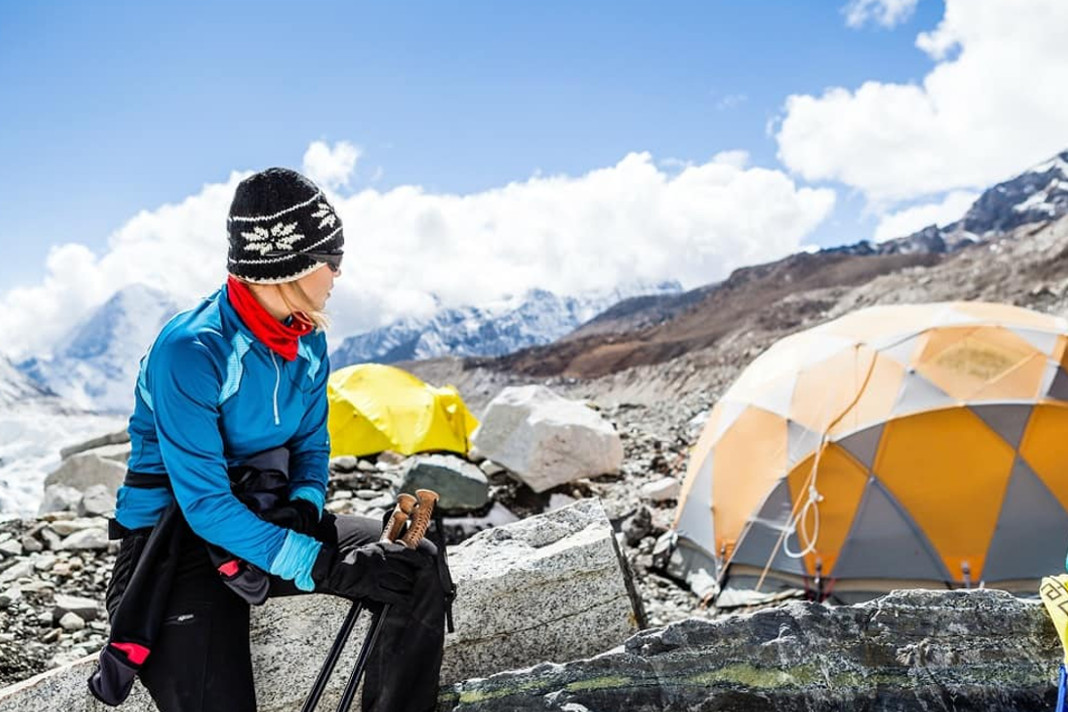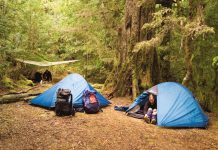Himalayan camping is an enthralling experience, but while we may immerse ourselves in the beauty and magic of Himalayas, we cannot take the dangers lurking lightly. One of the many dangerous things that might happen to you while on a Himalayan camp is an encounter with wild animals.
The Indian Himalayas is home to diverse species of animals, and each species comes with its blessing and dangers for campers out there. So, if you are planning to camp on Indian Himalayas, we have a couple of tips to offer.

Keep in mind the tips mentioned below, and you will be able to avoid animal encounters
1. Noise while advancing
While camping in the Indian Himalayas, it is suggested that you make some noise while making the encampment or proceeding through the trail. If you make your presence felt to the animals around, by talking or singing, you will be able to alert animals and they will most likely clear way.
While making noise is suggested, do not be too noisy. If you cause too much noise, then you might cause wild animals to react in an unexpectedly dangerous manner.
2. Staying calm helps a great deal
Wild animals attack when they see restlessness on our part. If you, in case, run into a wild animal while camping, you must maintain calm. If you are fidgety or react too violently, then this might cause wild animals to activate their offensive mechanisms—you would not want that to happen!
The trick is simple: you should not communicate to the animals that you are going to attack them or are afraid of them. Just behave as if you do not see them at all and you might be able to save yourself from great danger.
3. Take help from locals
While camping on Indian Himalayas, you should interact with locals. Locals know everything about the place—from how to survive the cold to how to tackle situations such as encounters with wild animals.
Collect information from locals. Ask them about the native wild animals, places where they are more active, and other things. What is most important is spatial awareness—take the assistance of locals in knowing the surrounding areas better.
4. Do not leave your food outside the camp.
Of course, food will attract wild animals towards the camp. So, the advice is simple: do not leave your food outside the camp. If you leave the food out anyway, wild animals will attack your camp for food.
It is highly recommended that you pack food tightly whenever you go to sleep. If wild animals smell your delicious food, you will end up in a huge trouble.
5. Change clothes after cooking
The point here is simple: if you wear the same clothes after cooking, you will carry the scent of the food and this will naturally attract wild animals towards you. With all the seasoning done on you, you will become an amazing meal to wild beasts lurking nearby.
It is, therefore, recommended you carry along enough number of clothes to change. This might increase the weight of your backpack, but, hey, isn’t life is more important than this?
6. Always remain in groups
You cannot singlehandedly handle wild animals—they are stronger and fiercer. In order to handle any adverse encounter with wild animals during your camp, you should remain in groups.
Indian Himalayas feature thick and confusing forests and there is a high possibility that your lonesome exploration stint might end up becoming the last thing you had ever done.
The wild animals avoid getting close to groups, and, thus, the chances of getting attacked get dwindled.
7. Do not mess with young wild animals
You must not mess with young ones of the wild animals. If you act contrary to our advice, a sequence of ugly events will ensue.
Toying with young ones puts elder animals on alert. Perceiving you to be a threat to the lives of their young ones, they will immediately attack you.
If you encounter young ones, change paths immediately, but do this in a way that shows you are not a troublemaker.
8. Flashlight is your lifesaver
One must not forget flashlights while camping on the Himalayas. The flashlight will provide you protection during night time. Wild animals generally do not come close to the light. Also, it is strongly recommended you keep fire close to the camp.
You can get a couple of animal sprays such as bear sprays. These sprays help a great deal when wild animals make an ambush.









